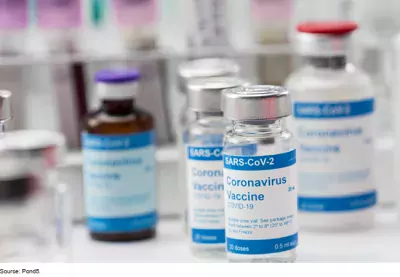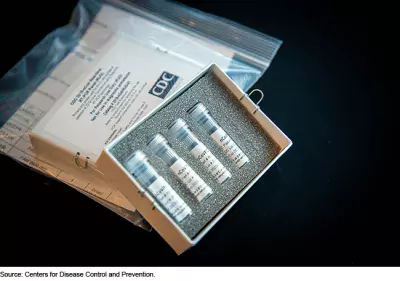Operation Warp Speed—Federal Efforts to Accelerate COVID-19 Vaccine and Therapeutic Development
Developing a vaccine can take 10 years or longer. However, as COVID-19 cases rapidly rose during the early stages of the pandemic, and with no vaccines or therapeutics available at that point to prevent or treat COVID-19, the federal government partnered with private industry to accelerate the development and manufacturing of vaccines and therapeutics to prevent and treat COVID-19.
Today’s WatchBlog explores our new report on the status of this effort. You can also tune in to our new podcast with GAO health care experts Mary Denigan-Macauley and Alyssa Hundrup to learn more:
Image

Operation Warp Speed
The federal government created Operation Warp Speed in response to the COVID-19 pandemic. Under Operation Warp Speed, vaccine developers are starting to manufacture their COVID-19 vaccines before testing has been completed. Consequently, Operation Warp Speed intends to be ready to distribute any vaccine as soon as the Food and Drug Administration (FDA) determines that a vaccine is safe and effective.
Under Operation Warp Speed, the federal government has publicly announced financial support for the development and manufacturing of six COVID-19 vaccine candidates totaling more than $10 billion in obligations. Its goal is to produce 300 million doses of a vaccine, with initial doses available in January 2021.
Many of Operation Warp Speed’s vaccine candidates are in the final stage of the development process—i.e., conducting large-scale clinical trials.
However, there are important challenges to consider. For example, ramping up manufacturing of COVID-19 vaccines depends on the manufacturing supply chain. Before the pandemic began, most manufacturing resources were being used for other vaccines, and private industry representatives working on COVID-19 vaccines have told us they’ve had trouble obtaining these resources.
Emergency Use Authorizations
The federal government can issue Emergency Use Authorizations, which temporarily allow the use of unapproved products—such as vaccines or therapeutics—or unapproved uses of products during emergencies, such as COVID-19. So far, it has issued 4 of these “EUAs.” For example, remdesivir—a drug previously developed to treat Ebola—has been authorized to treat COVID-19 in certain patients.
But while these authorizations can provide the federal government with flexibility and help make treatments available more quickly during an emergency, there’s no guarantee they will work as an EUA allows for less certainty of effectiveness than is required to approve therapeutics or license vaccines. FDA has revoked emergency authorizations for some drugs, namely chloroquine and hydroxychloroquine, because they later found they were not effective at treating COVID-19.
Additionally, making a therapeutic or vaccine widely available through emergency use authorization could negatively affect participation in further clinical trials. Such trials, or studies of the drug’s effectiveness and safety in humans, are necessary to support any eventual approval. In addition, if a drug originally used to treat a different disease is used to treat COVID-19, it can result in a shortage of that drug, potentially impacting patients who need it for the original use.
Image

Moving forward
As the federal government moves forward in its efforts to support the development of vaccines and therapeutics for COVID-19, it’s important for the FDA to be transparent about the safety and effectiveness data it uses when deciding whether to authorize a vaccine or therapeutic.
However, we’ve found that FDA has not uniformly disclosed information about its decisions on COVID-19 therapeutics. This lack of transparency could erode the public’s trust in FDA’s decisions about COVID-19 vaccines or therapeutics.
Want to know more? Check out our new report.
- Comments on GAO’s WatchBlog? Contact blog@gao.gov.
GAO Contacts
Related Products

GAO's mission is to provide Congress with fact-based, nonpartisan information that can help improve federal government performance and ensure accountability for the benefit of the American people. GAO launched its WatchBlog in January, 2014, as part of its continuing effort to reach its audiences—Congress and the American people—where they are currently looking for information.
The blog format allows GAO to provide a little more context about its work than it can offer on its other social media platforms. Posts will tie GAO work to current events and the news; show how GAO’s work is affecting agencies or legislation; highlight reports, testimonies, and issue areas where GAO does work; and provide information about GAO itself, among other things.
Please send any feedback on GAO's WatchBlog to blog@gao.gov.





